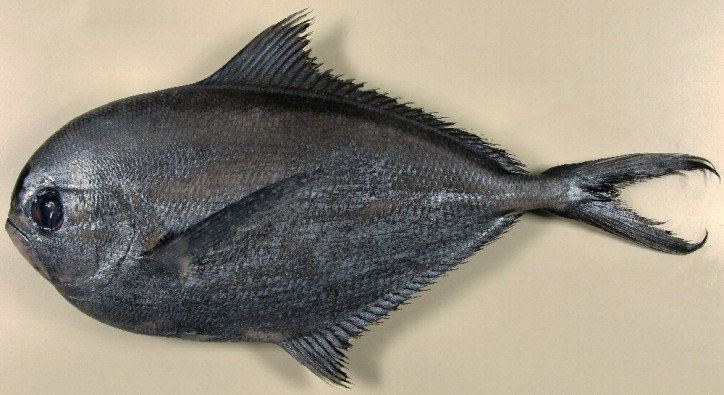Fish of the Brama genus of the Bramidae (pomfrets) family of the superfamily Percoidea of the Perciformes order of the Acanthopterygii superorder.

(Atlantic pomfret. Photo by © Karla Otta. biolib.cz)
Atlantic pomfret (Brama brama) was first described in 1788 by the French abbot and naturalist Pierre Joseph Bonnaterre (1752-1804).
It inhabits the depths of up to 1,000 meters, usually – up to 200 meters. It is a bathypelagic species. These fish get together in small schools. Sometimes, they swim close to the shore, chasing the food. The maximum recorded length is 100 cm, specimens up to 40 cm long are more common. The maximum weight is 6 kg. It feeds on small-sized fish, cephalopods, and crustaceans.

(Atlantic pomfret. Photo © Ichthyology Database of the Swedish Museum of Natural History. artedi.nrm.se)
It is a permanent rare inhabitant of the Adriatic Sea. It is more often found in its southern part.
Names of Atlantic pomfret (Brama brama) in other languages as follows:
Braam (Dutch), Θαλασσομπράμα (Thaljassomprama) (Greek), Japuta (Spanish), Pesce castagna (Italian), Brachsenmakrele (German), Brama (Polish), Chaputa (Portuguese), Атлантический морской лещ (Atlanticheskyi morskoj lesch) (Russian), Grboglavka (Serbian, Croatian), Kostanjevka (Slovenian), Grande castagnole (French).